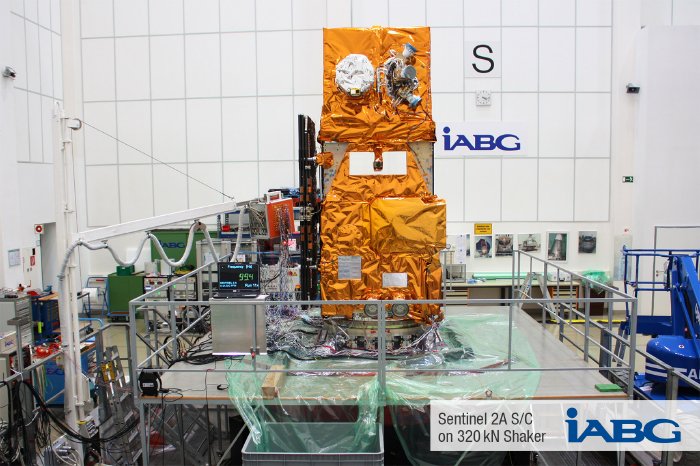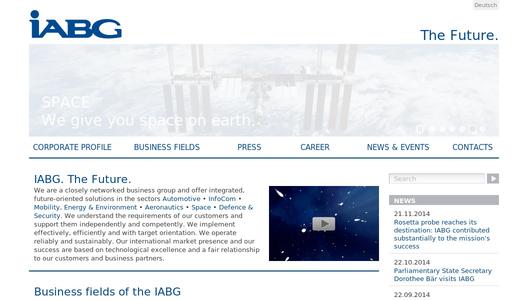This day is the last opportunity to inspect the satellite before it will commence its journey to the Kourou space centre in French Guyana. From there it will be deployed into space using a Vega launch vehicle.
The satellite underwent an extensive qualification programme at IABG's test facilities, comprising mechanical tests, such as vibration and shock testing, acoustic tests, as well as the determination of its mass characteristics. In addition to that, IABG performed space simulation tests in a thermal vacuum test facility, as well as tests to determine the satellite's electromagnetic compatibility (EMC).
The test campaign was subject to particularly high cleanliness requirements as the satellite's sensitive optical components had to be protected against molecular contamination during the environmental test phases.
Amongst others IABG expects to welcome high-ranking representatives of Airbus Defence and Space, ESA, as well as from the European Copernicus earth observation programme at the press event.
"We are delighted that IABG was allowed to play a key role in this project by performing the satellite's qualification tests." comments Prof. Dr. Rudolf F. Schwarz, IABG's CEO. "After the successful completion of the test campaign IABG sees itself ideally prepared to provide an important contribution to the Copernicus programme with its test services in the context of subsequent projects as well."
The Sentinel-2 system consists of the two Sentinel-2A and Sentinel-2B satellites and is part of ESA's Copernicus programme. Sentinel-2A will be assigned to provide high-resolution, multi-spectral earth observation data. The satellite will presumably commence its space operation in June 2015.



